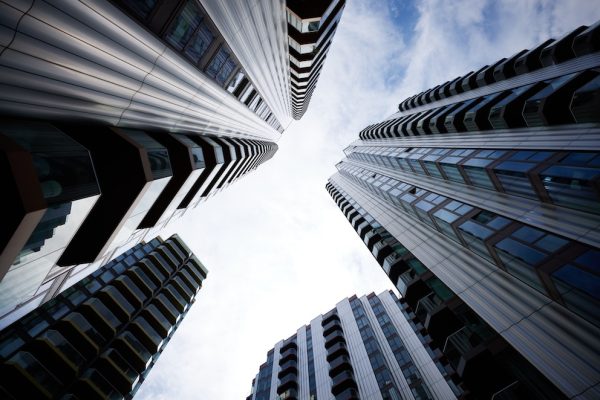The Case for a Smarter Future: Digital Twins
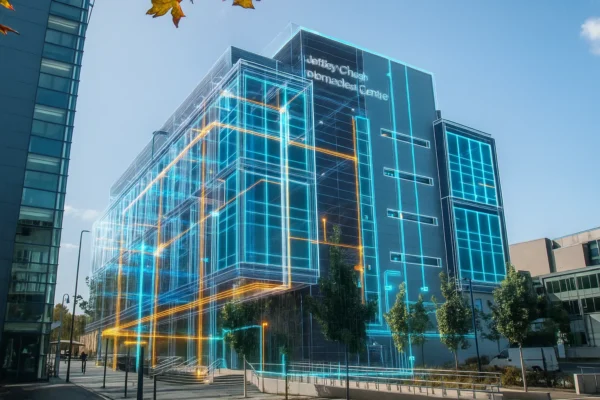
In the face of rising demands for performance, sustainability, and long-term value, the construction and real estate industries are being pushed to evolve. From smarter maintenance to more sustainable operations, the pressure is on to unlock new efficiencies. As we look to the future, one tool is rapidly emerging as a powerful enabler of this shift: the digital twin.
Digital twins represent more than a technological upgrade – they are a transformational opportunity to understand and optimise our built environment at scale. And architectural practices have a crucial role to play in this shift towards a more digitised built environment.
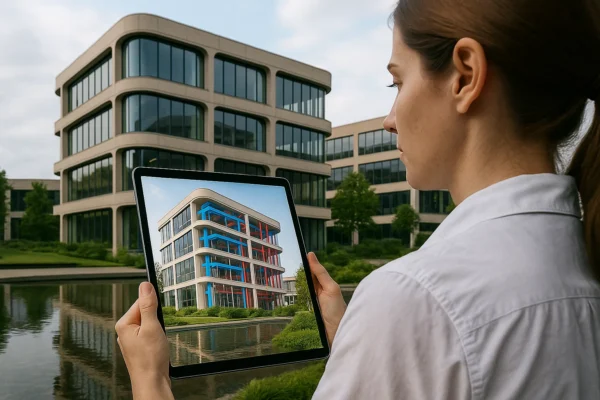
What is a Digital Twin?
Distilled to its simplest form, a digital twin is a digital replica of something that exists in real life. This technology is being used in many different industries, such as Formula One racing – where digital models and live telemetry inform microscopic performance tweaks, or neuroimaging – where digital models of human brains are being developed to study disease progression or predict treatment outcomes. In the construction industry, this technology is quickly being adopted in logistics projects like airports or underground rail networks to help coordinate complex moving parts and identify hazards.
However, in our industry, there can be some confusion about what constitutes a ‘digital twin’. Architects and technicians work with 3D digital models every day to design and build complex facilities, but a digital twin can be considered to be much more than this.
While these digital copies can range in their level of sophistication, a true digital twin is a living, breathing digital replica of a physical building – continuously enriched by real-time sensor data and capable of interacting with its physical counterpart.
Imagine a building that recognises subtle shifts in air quality and automatically purifies lab spaces, that reroutes power to mission-critical equipment during grid strain, and that learns from years of operational data to continuously improve performance without human intervention. And all of this goes beyond the obvious sustainability benefits. It’s also about making a space as effective and responsive as possible – enhancing human comfort, wellbeing, and even emotional experience through the improved background processes a digital twin can help orchestrate.

The Operational Advantages of Digital Twins
While the development of a digital twin offers a lot of potential during the design process, its most transformative potential lies in its utility for operational teams. Having a detailed virtual copy of a building can be a major asset for FM teams in a variety of ways:
Performance optimisation: Spaces can adjust based on occupancy. For example, if a large meeting is scheduled in a room at 2:00, heating or cooling can be activated in advance to balance out temperature changes – while underoccupied rooms are powered down. Some systems may even anticipate daily patterns, such as lowering shades in strategic areas to reduce glare, or adjusting light intensity throughout the day to balance with natural lighting.
Smarter maintenance: Alongside sensor inputs, a digital twin can offer a detailed maintenance schedule of every component within a building, a major asset especially within facilities that are MEP-heavy such as complex science buildings or large-scale industrial estates. The system can guide technicians to the exact location of an asset, flag issues before they escalate, and even recommend the most efficient order for servicing. In high-risk environments, or areas difficult to reach, VR walkthroughs can identify hazards before a person ever sets foot onsite.
Better data: Because the twin collects and organises sensor data, facilities managers can assess building performance holistically. It helps surface inefficiencies, analyse asset wear, and flag anomalies that would be hard to spot otherwise. In secure facilities, it can also support access logging and intrusion detection by tracing movement patterns through the building.
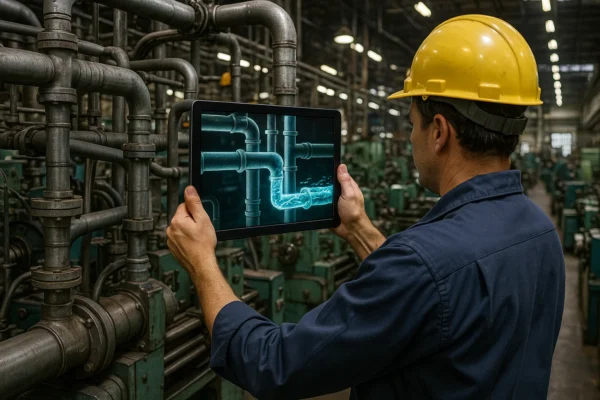
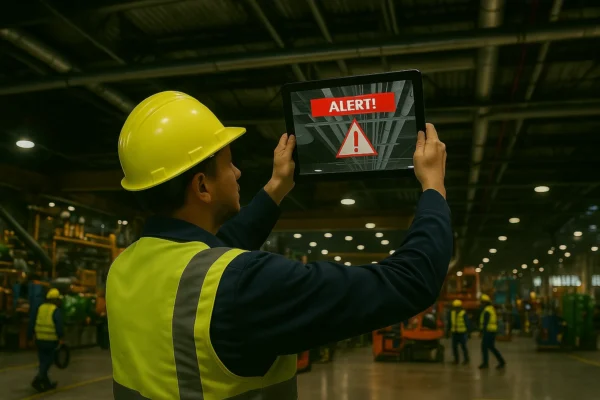
Unlocking Potential for Sustainability
A digital twin that is receiving and responding to detailed live data unlocks a huge degree of optimisation potential, and this goes beyond just turning the heating down or turning the lights off when no one’s home:
Predictive interventions: A more intelligent twin can respond to forecast conditions. If it’s predicted to get warmer by midday, the system can begin cooling gradually in the morning, reducing energy spikes and avoiding the need for HVAC systems to work at full capacity. Or, the twin might recognise optimal conditions for natural ventilation and automatically open vents or windows in response. In buildings with responsive façades or solar shading systems, a twin can adjust them pre-emptively based on predicted solar gain. In facilities powered in part by renewables, it might even coordinate the timing of high-energy activities – such as charging batteries or running chillers – based on when solar or wind energy is forecast to peak.
Granular measurement, measurable gains: The smarter the twin, the more detailed its actions – and the more traceable its carbon savings. With continuous monitoring, even subtle improvements – like tighter zone control, reduced compressed air loss, or more efficient lab purge cycles – can be implemented and measured. These insights feed into improved lifecycle modelling, enabling architects and clients to evaluate the long-term sustainability of different decisions, and feed that back into early stage thinking.
Looking ahead, the real leap lies in modelling not just individual buildings but clusters and cities. As our BMS and grid systems grow more advanced and integrated, a digital twin may be a critical tool in understanding how buildings can work together to increase our climate resilience. In the future, large scale digital twin modeling of a cluster or estate may allow renewable energy to be diverted to locations most in-need, or, in the context of an extreme weather event, a digital twin of a city may allow us to track resource allocation, diverting energy and heat to central spaces where it is the most needed.
Digital twining of cities is already happening throughout some forward facing cities around the world in China, the Arab Emirates, or the US, and several UK cities are in talks with digital professionals about the possibilities. These benefits may not be as ‘futuristic’ as you’d think.
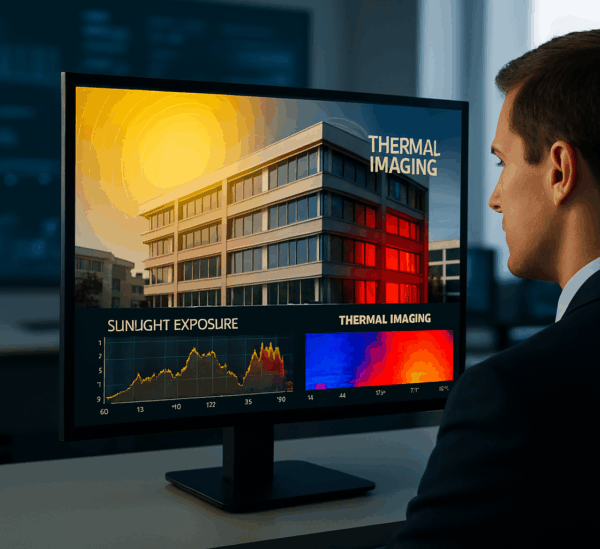
Why Should Architects Be Involved?
Embedding the digital twin creation process during early design phases is the most efficient route to a fully integrated high-performing twin. This is where architects come in:
Design-led integration: Though a digital twin is possible to accomplish retrospectively – through scan-to-BIM or similar approaches – by teams down the line, this process can be extremely difficult, time consuming, and often leads to compromises. Starting the model during the design phase makes it richer, more accurate, and more interoperable over the long term.
Smoother handover: Handover can be a pain point between construction and operation. A digital twin streamlines this by making the FM model a natural continuation of the design and construction model. No need to reformat asset data or manually input health and safety files—the information is already embedded and ready to use.
A powerful design tool: Most importantly, digital twins can help us design with outcomes in mind. If our role is to help clients get the best from their buildings, then designing directly for real-world success – not just aesthetics or hypotheticals – should be our priority. By learning from detailed in-use building data, we also stand to improve our future designs with evidence, understanding where discrepancies may persist between intentions and real-world use.
For architectural practices, the opportunity isn’t just about using the tech. It’s about helping to lead its meaningful integration – from day one. By embedding digital twins into the design process, we can help unlock the performance and sustainability gains our industry so urgently needs, and create buildings that are more comfortable, more intuitive, and more responsive to the people who use them.
Looking Ahead
From operational efficiency to sustainability and performance-led design, digital twins offer a future where buildings are more intelligent, adaptable, and aligned with the needs of their users.
And we’re only scratching the surface. As digital twins become more sophisticated – and as more buildings adopt them – we’ll gain the ability to manage campuses and clusters of buildings as cohesive ecosystems.
This opens up enormous potential: imagine a research district where renewable energy flows dynamically between facilities, where critical lab environments auto-adjust to protect experiments, and where every asset, from the largest HVAC plant to the smallest sensor, contributes data to a unified, intelligent platform that helps us design better, operate smarter, and respond faster.
We can begin that journey now. As designers, we are uniquely placed to initiate, coordinate, and champion the development of these models – filling a pivotal role in the digital transformation.
Written by Paul Smith, images (with a bit of humour) generated by AI
